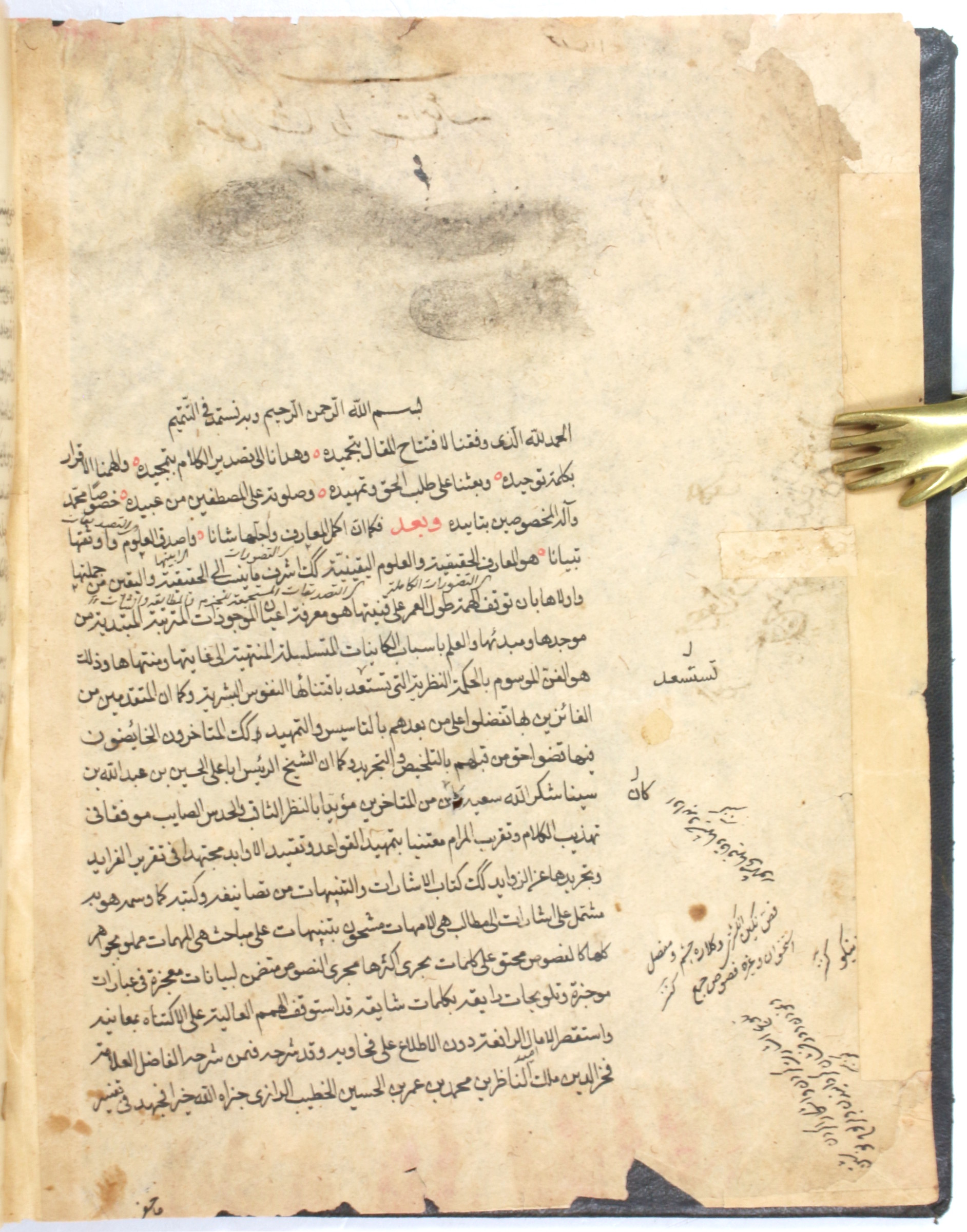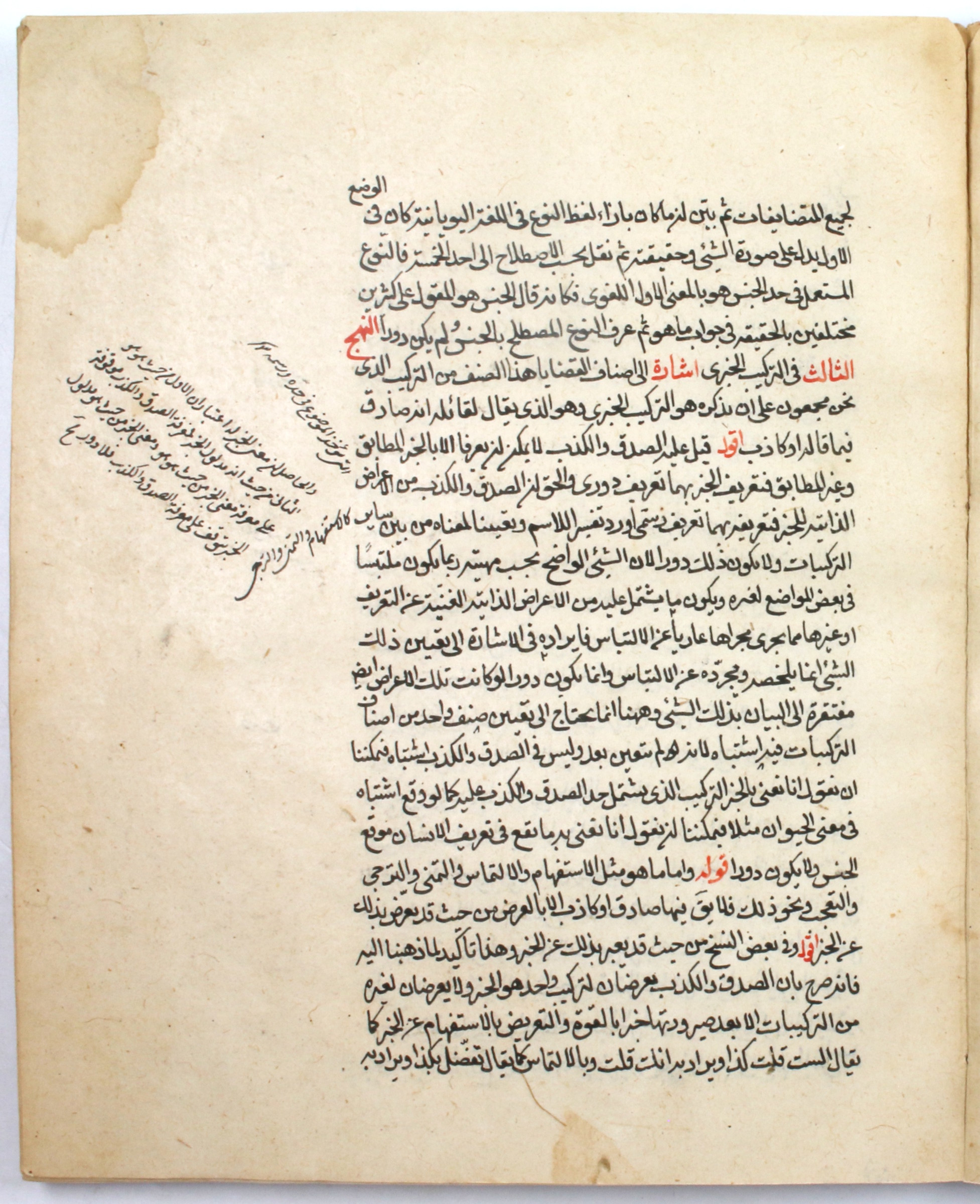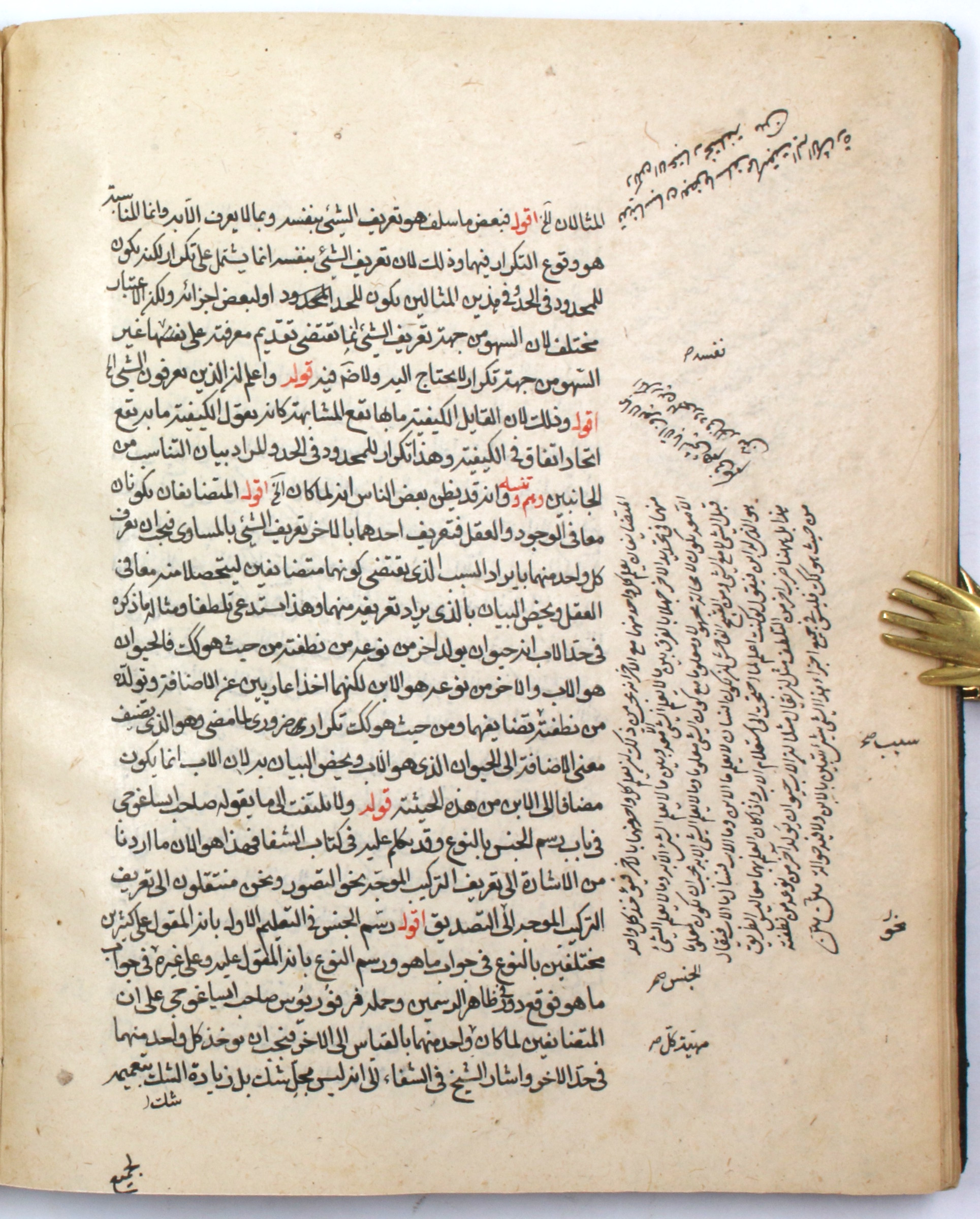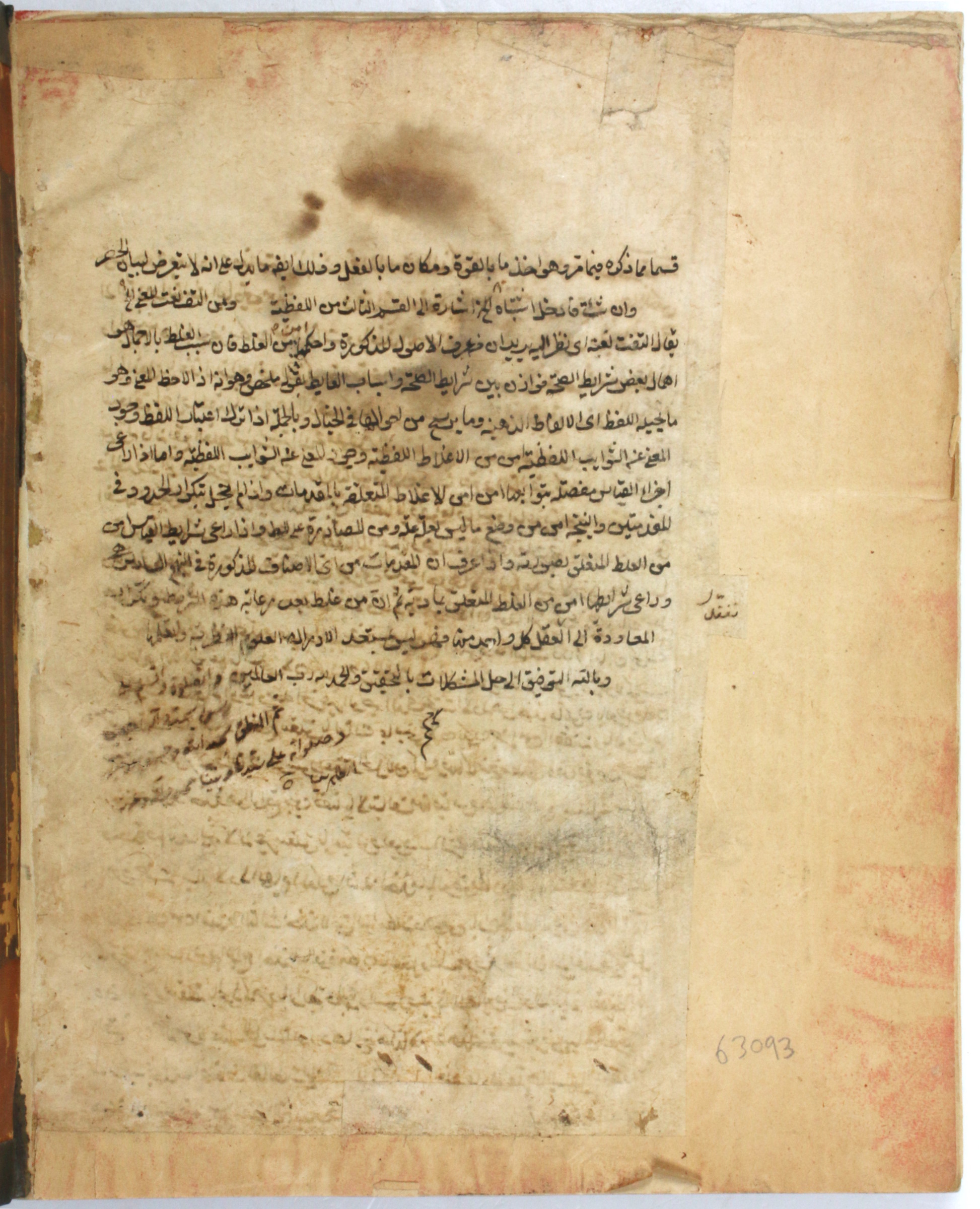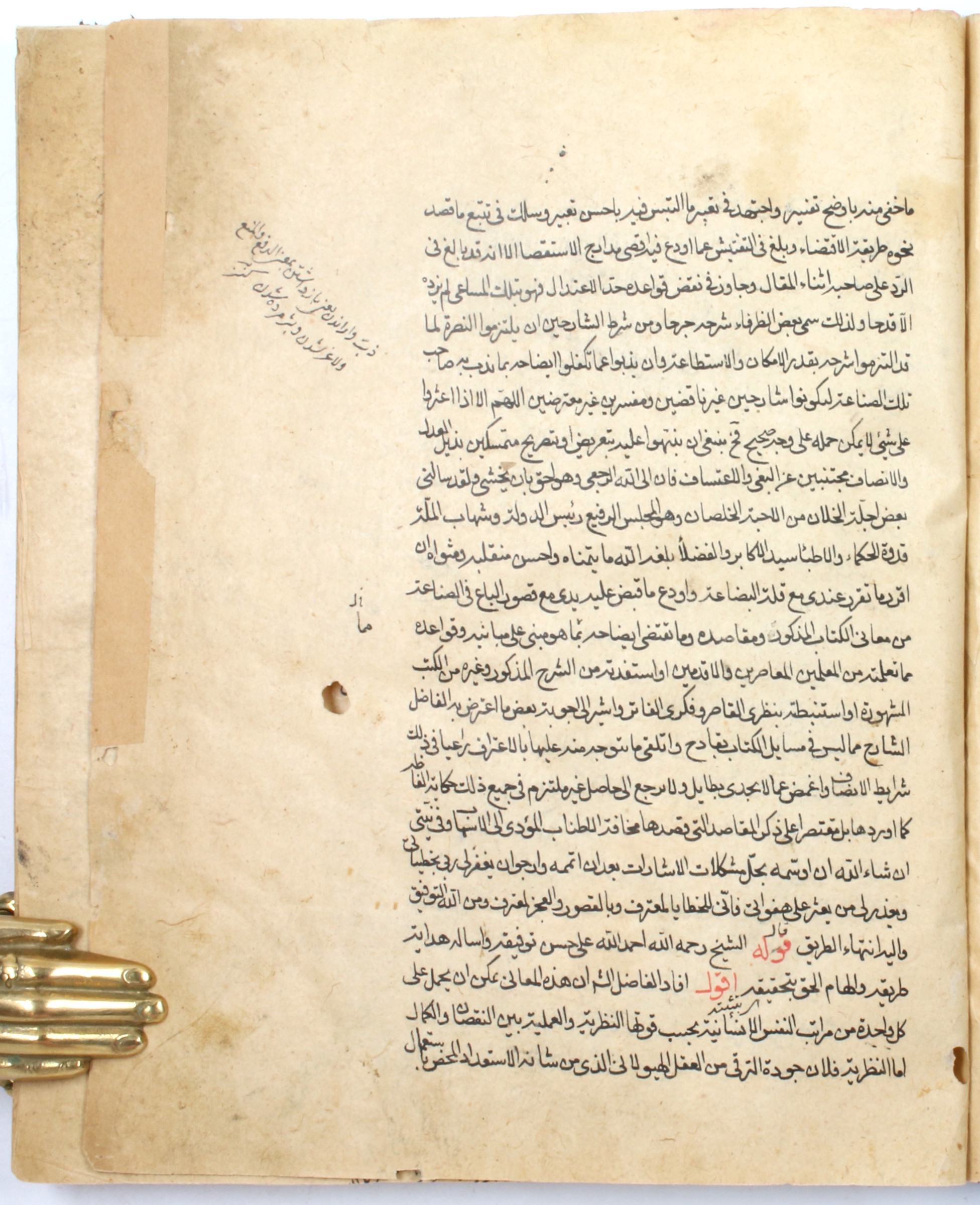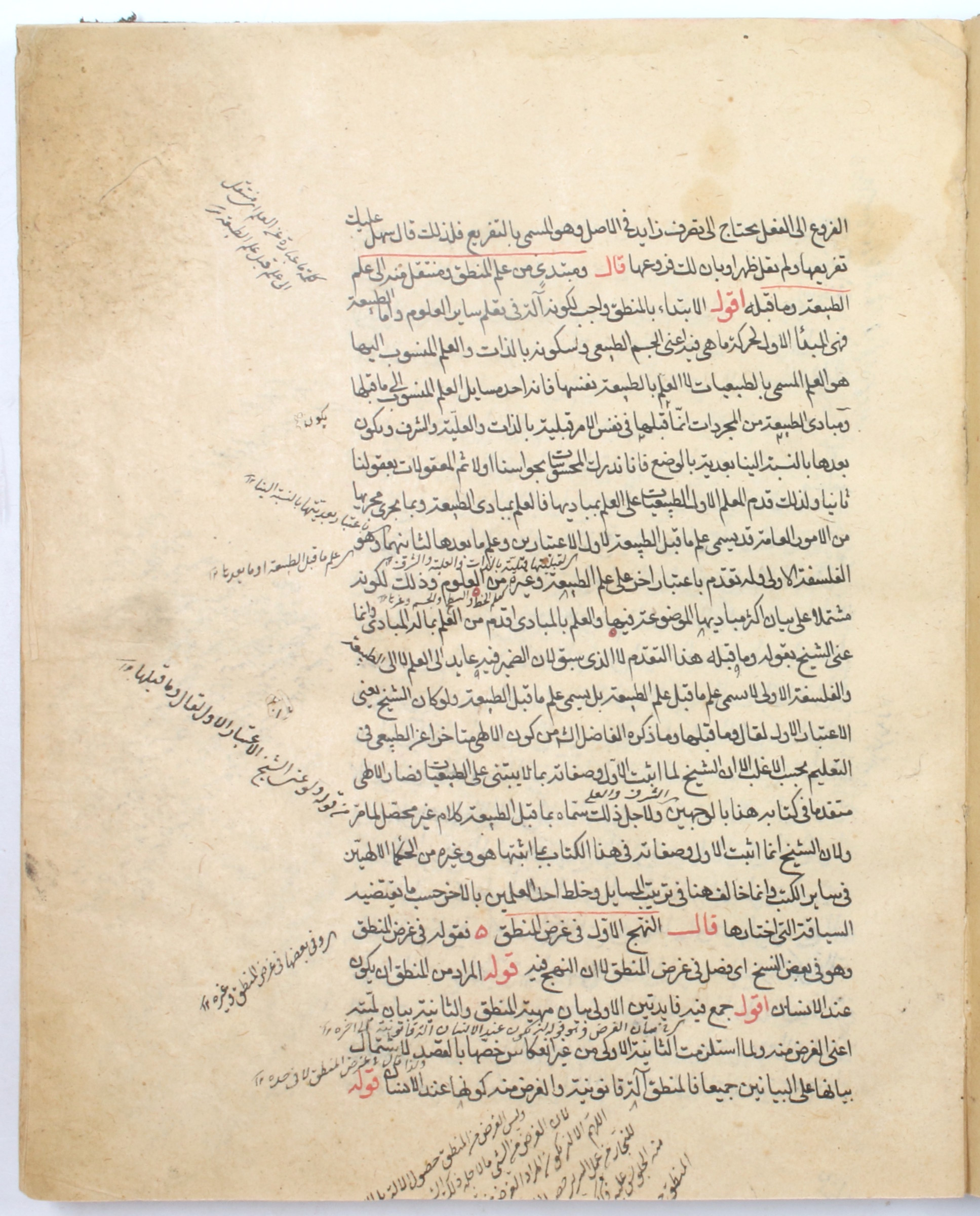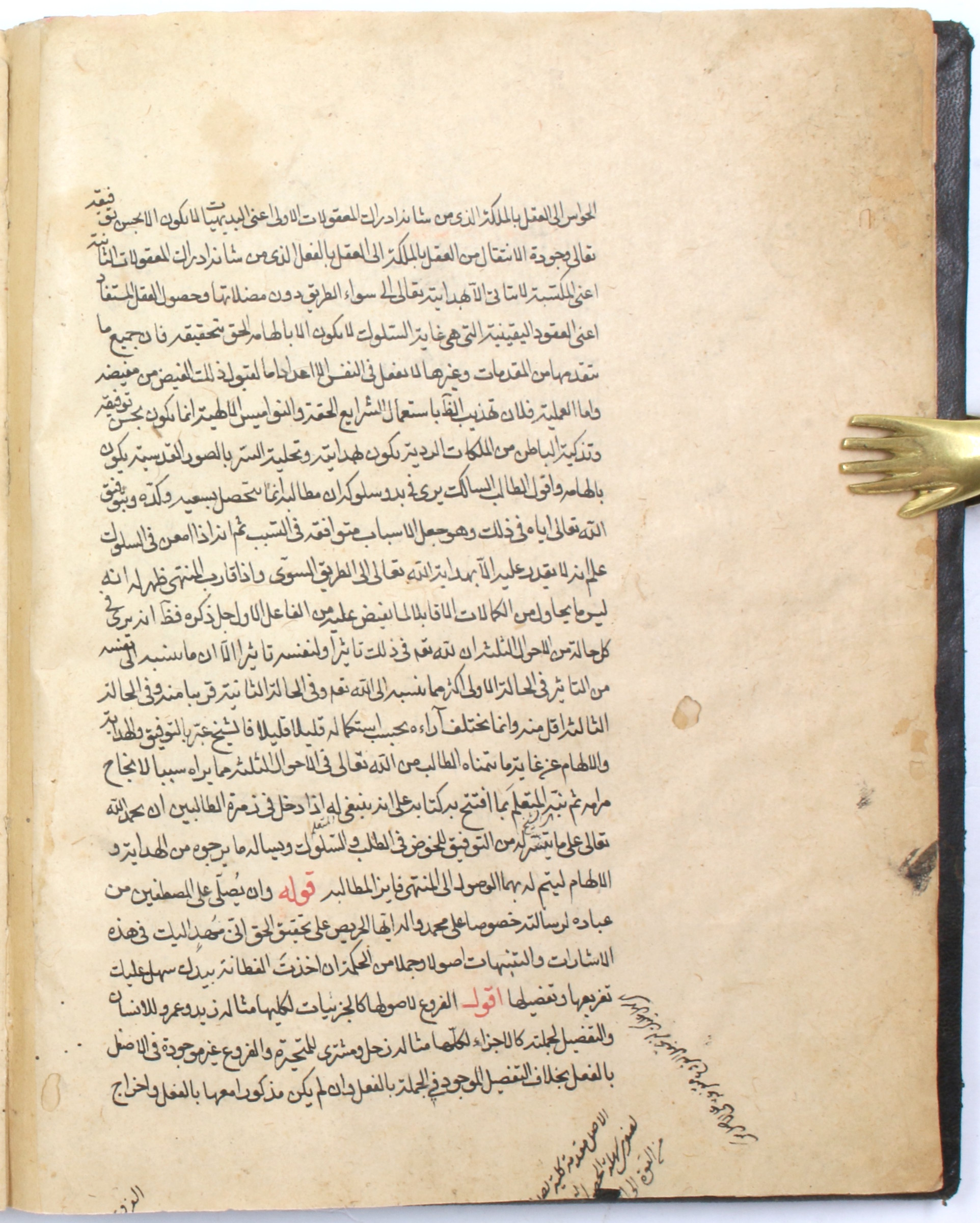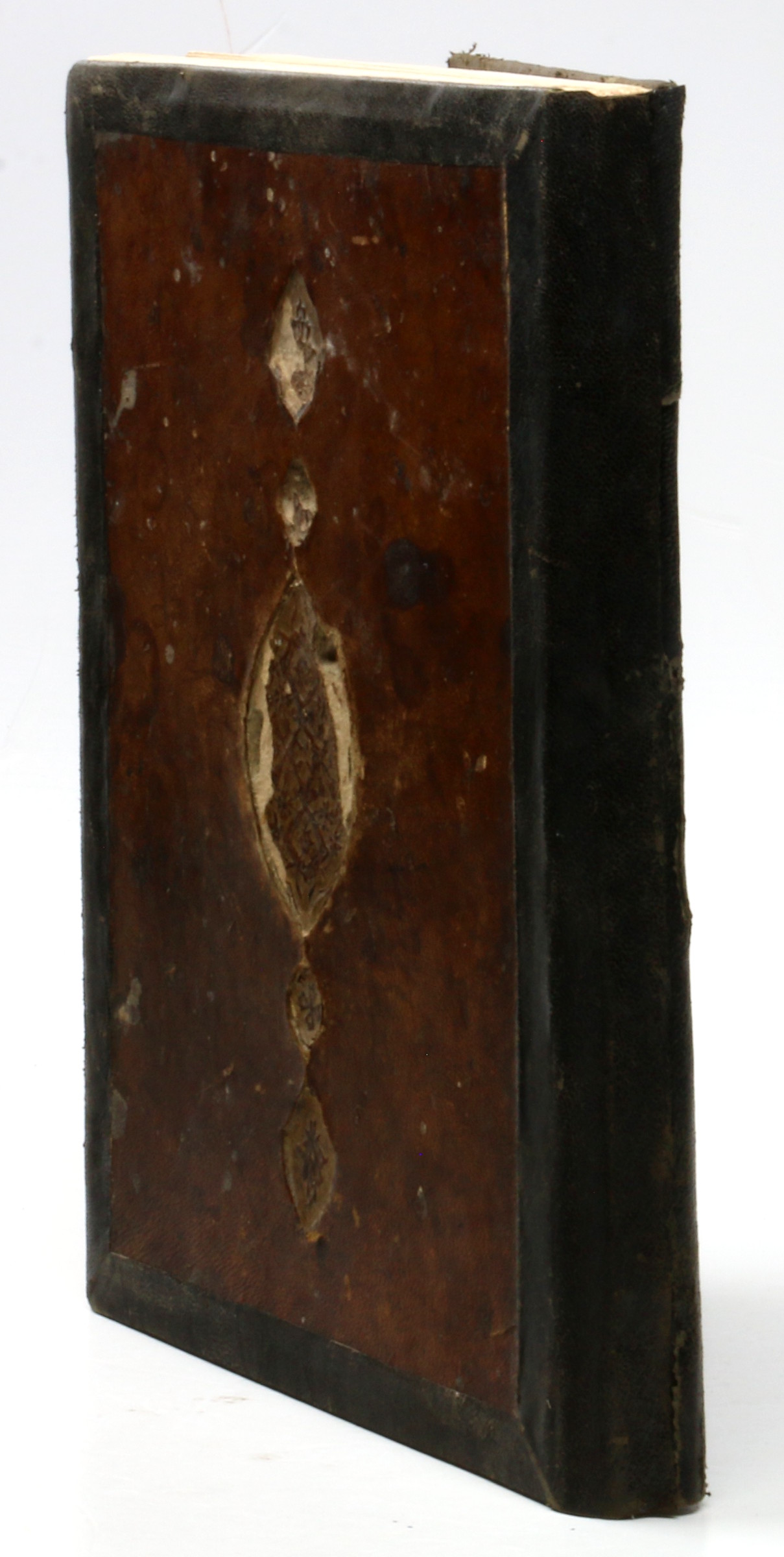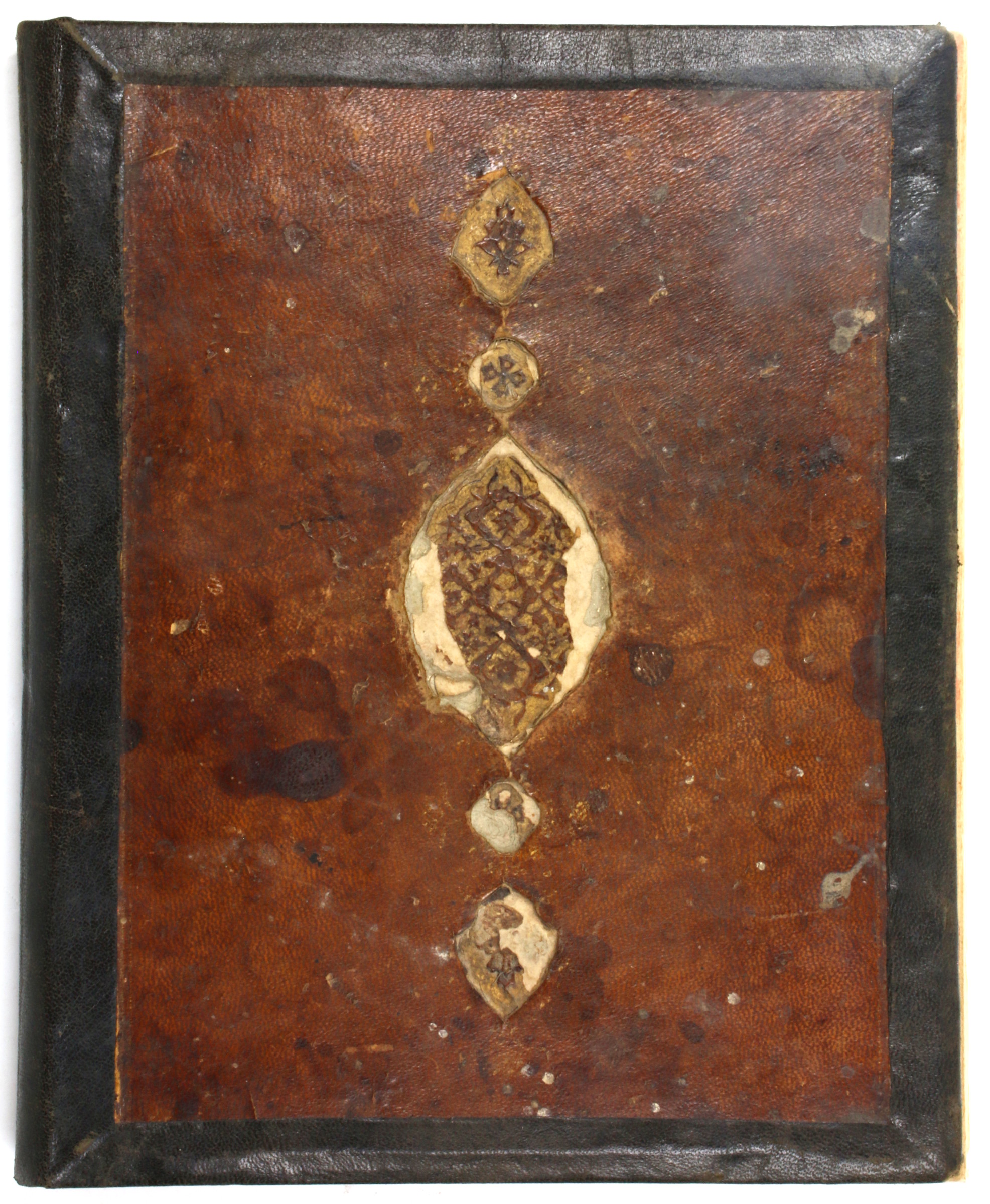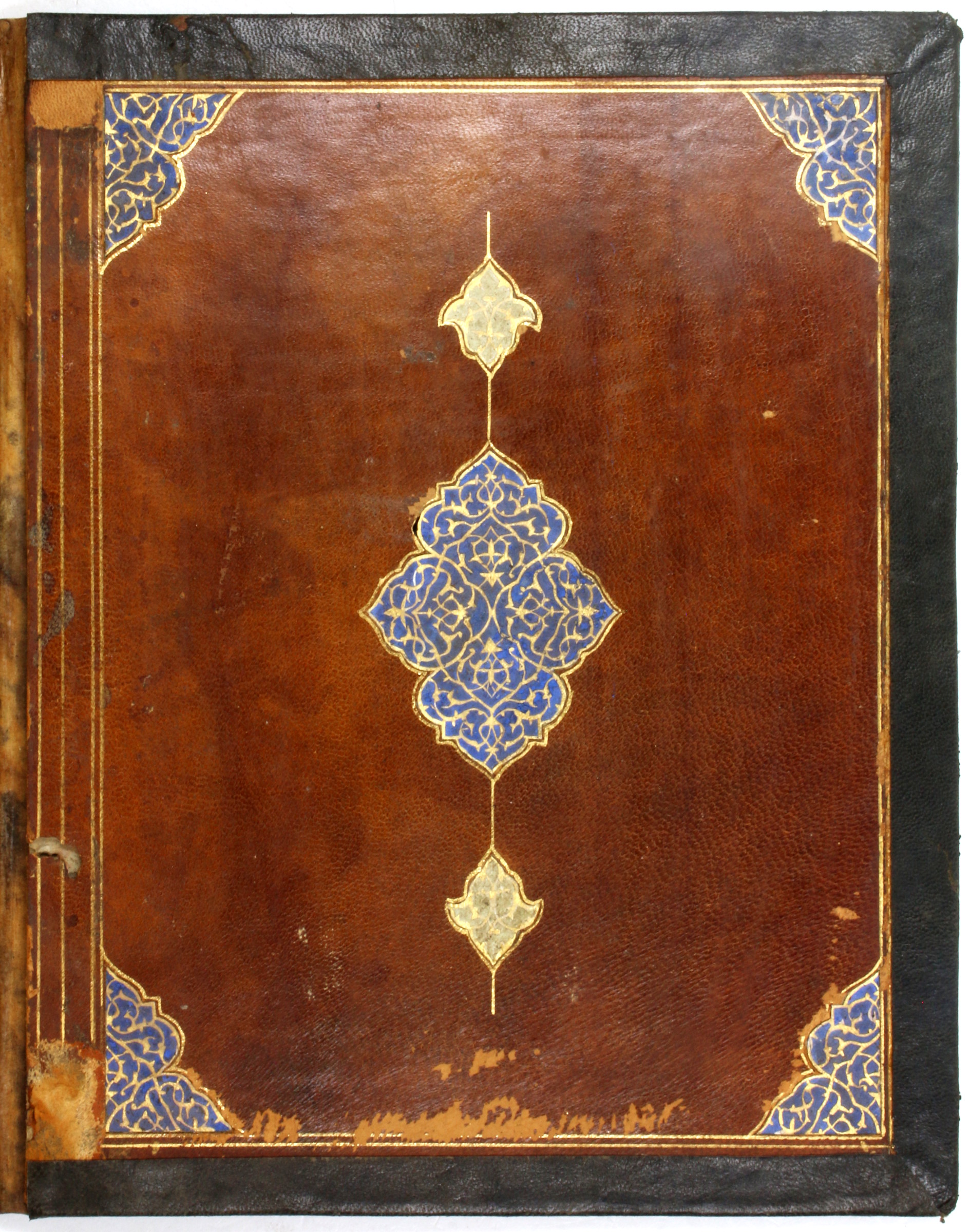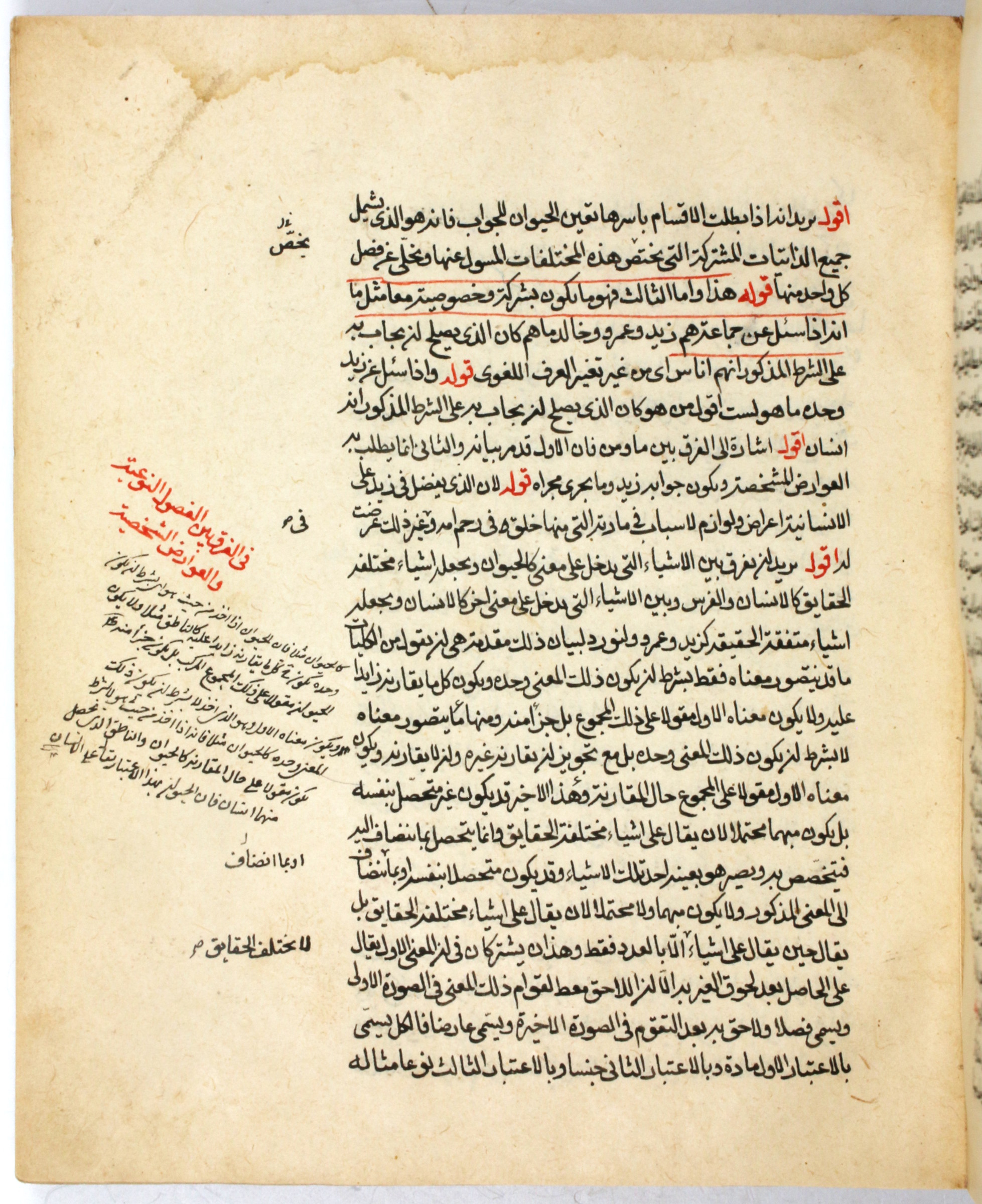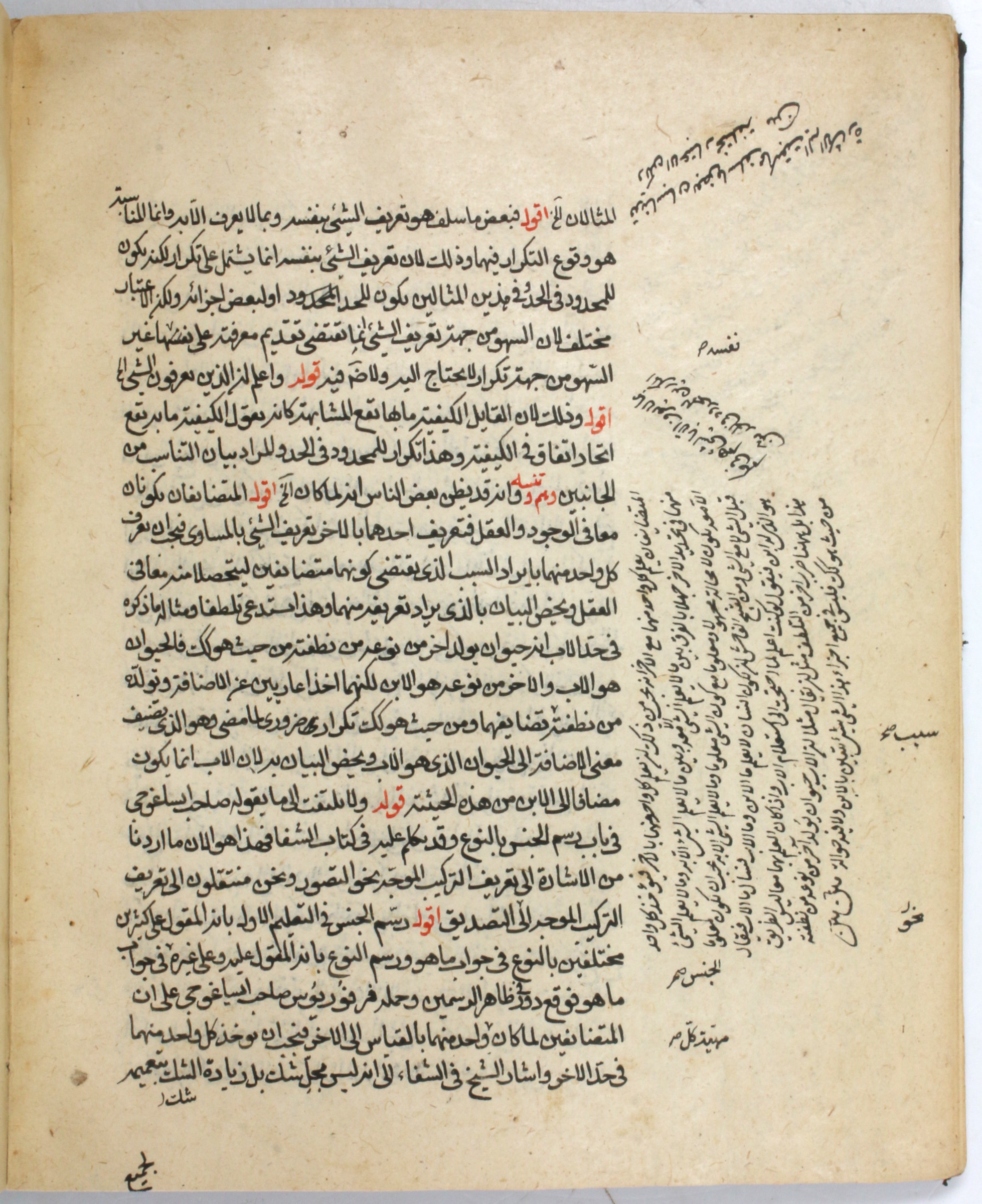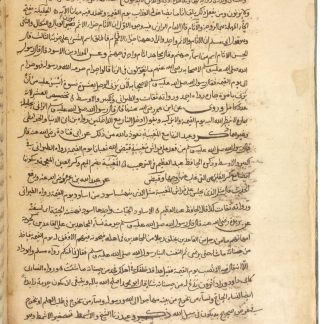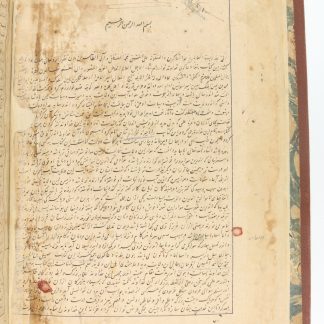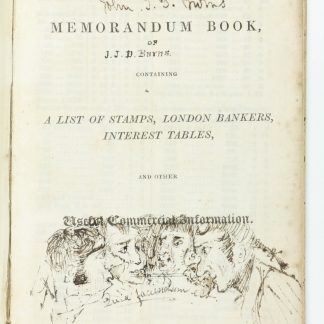The logic of Ibn Sina
Sharh al-Isharat.
4to (185 x 226 mm). 96 ff. Arabic manuscript on paper. Black naskh script with important words and phrases picked out in red. With 1 small diagram. 19th century full leather with medallions, spine replaced.
€ 12.500,00
Al-Tusi's commentary on one of Ibn Sina's most mature and complex philosophical texts, "Al-Isharat wa al-Tanbihat", comprising "Al-Mantiq", the first half of the work, which is dedicated to the study of logic. The impact of Ibn Sina's (980-1037 CE) writings on philosophy and logic can hardly be overstated. Known as Avicenna in Europe, he was often second only to Aristotle in the education of both Muslim and Christian scholars of the medieval and early modern periods. This was one of his later Arabic works, and a demanding and academic read.
In the commentary "Sharh al-Isharat", Ibn Sina's work is interpreted by Nasir al-Din al-Tusi (1201-74 CE), another great mind of the medieval Muslim world. Al-Tusi is heralded as the inventor of trigonometry, and famously posited astronomical theories which may have influenced the development of the heliocentric theories of Copernicus.
Both authors were polymaths who wrote in Persian and Arabic, and both influenced the course of science and philosophy in the Muslim world and the Latin West. Al-Tusi's commentaries on Ibn Sina combine some of the finest work available in Muslim natural philosophy.
Final two leaves with marginal paper repairs; a few catchwords trimmed closely.
Cf. GAL I 508.

